Royal Navy carrier HMS Queen Elizabeth is scheduled to leave Portsmouth at 16:40 on Wednesday 16 July to begin sea trials, marking the transition from the first to the second phase of a planned overhaul.
The carrier will test new navigation and propulsion systems in UK waters before sailing north to Rosyth for a seven-month dry docking at Babcock Dockyard. The work follows nine months of engineering and crew training in Portsmouth as part of the ship’s mid-life maintenance, described by the Navy as equivalent to a car MOT.
“We have achieved an enormous amount in 2025, with a significant upgrade to our propulsion system being the most notable item amidst a wide range of engineering projects tackled alongside our partners from industry,” said Captain Claire Thompson, the ship’s commanding officer.
“Although HMS Queen Elizabeth is now due a seven-month docking period in Rosyth after a short period of sea trials, my focus remains generating a highly capable team that can take the ship from our docking period and work towards front-line duties.”
Sea trials will be overseen by the Royal Navy’s Fleet Operational Standards and Training (FOST) teams, assessing the crew’s ability to manage emergencies including damage control, fire and flood response.
The docking in Rosyth will allow inspection and upgrades to systems inaccessible while afloat. The ship’s company will be split between accommodation in HMS Caledonia in Fife and facilities in Portsmouth, with sailors expected to engage with Scottish affiliates during the stay.
The maintenance period follows six years of high operational tempo, including a 2021 global deployment to the Indo-Pacific and participation in NATO exercises. The current work is intended to prepare the carrier for its next front-line mission.


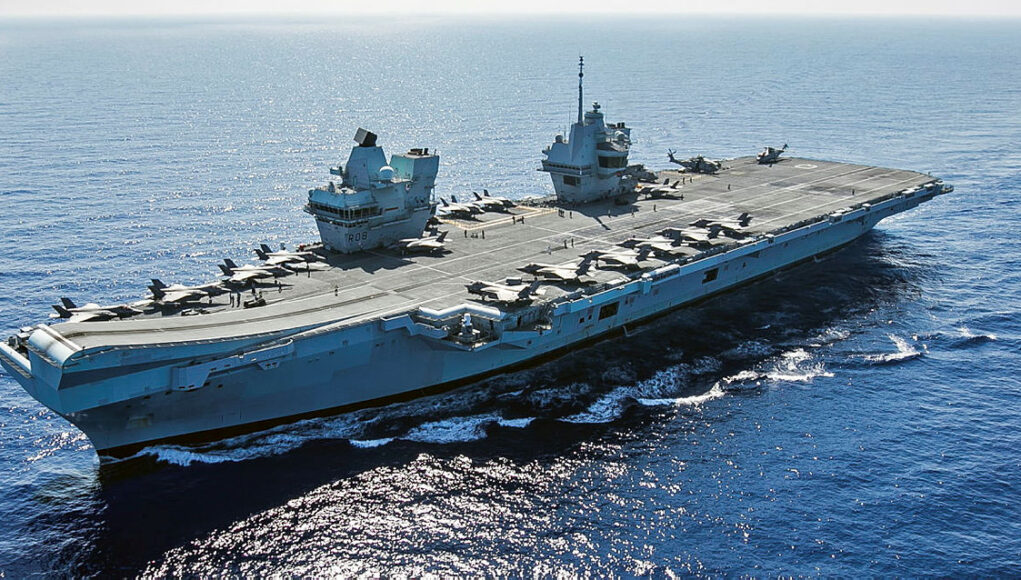
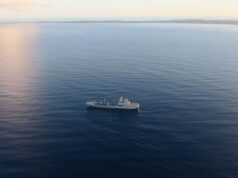
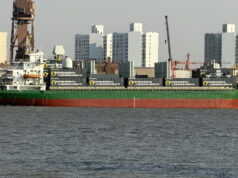
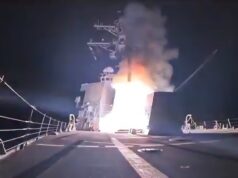
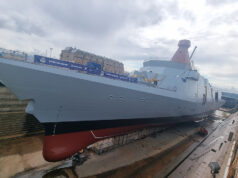
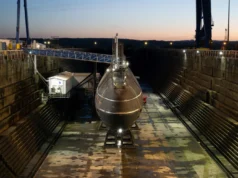

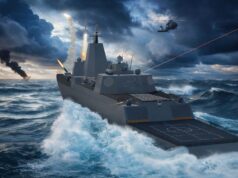
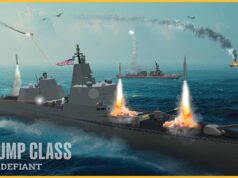
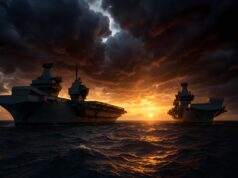


“mid-life maintenance” didnt realise she’d been commissioned for 25 years already.
same
Just what I was thinking.
After 9 months of maintenance, the plan is she sails round the UK a couple of times then goes back into another 7 months maintenance?
Up to now she has been kept in a deployable state in case it was needed. Now it needs drydock work
Just to amplify.
The first load of upgrades were, likely done, in such a way as to allow the carrier to be deployable in a set number of days.
This could well have been to avoid the egg-on-face type of cancellation that occurred due to the prop shaft debacle last time round. So it is pretty understandable if the other QEC was kept close to ready. Good to have two of them!
Now there are various things like painting the hull/anti fouling and no doubt other things that won’t be announced that need dry dock time.
These things need to be regularly if she is going to have the slated 50 year hull life without turning in HMS Hermes…..and if you ever saw Hermes close up in the 1980s you will know exactly that I mean….
To be fair the Happy H was an odd story of a ship that should never have been.. all the centaurs were designed in a rush for a specific purpose with very little eye beyond the war.. and they had no chance of keeping up with the needs of larger and larger aircraft.. they were all build for the 1940s.. but due to a budget restraint Cold War were not commissioned to the mid to late 1950s and were essentially out of date by the 1960s.. it’s a remarkable set of coincidences that ended with the Hermes still being an aircraft carrier into the 21c…when all of her sisters left service in the 1960s, or battled on for a decade as amphibious vessels.
Another reason for the docking all resent RN warships have been designed and built to Lloyds Classification Naval Rules which require regular dry docking to inspect underwater fittings like hull valves etc, to keep the vessels in Class.
Do we know what propulsion upgrades were installed, or are they referring to the prop shaft fixes?
Its a propeller scraper and polisher. It’s diver deployed and vacuums up the crud as it goes. That’s your major upgrade.🤣
I wonder what weapon upgrades will be installed? New advanced anti-drone systems must be high on the list of urgent requirements, and if they aren’t, then I would suggest they should be. Currently, drone saturation is the most worrying weapon, designed to overwhelm countermeasures, especially when a vessel is in port.
There are no weapon upgrades planned
POW Wales has had at least 2 trainable decoy launchers quietly fitted before her departure on CSG 25 this year, it’s unknown whether they are the sparsely seen torpedo countermeasure system currently in service with the RN or the newly acquired Ancilia system as they are both visually similar and there had been no announcement on it.
Other than that possibly also being fitted to QE there are no planned upgrades to the carriers weapon systems in this upgrade period, the SDR recommendations might significantly change that in future MLU’s.
It’s probably the Torpedo defence system. Ancilla hasn’t been delivered yet
Actually, perhaps a potentially very interesting question. Given SDR recommendation to incorporate missile defense on the QE class, if this goal is explicitly addressed in the DIP, the RN may surprise many by saluting smartly and moving out. Potentially designing, if not installing, a CAMM farm, or trainable launchers, or dare to contemplate a MK-41 installation? Certainly feasible to install the 30mm mounts, weaps evidently in inventory. RN may just possibly have additional funds available this autumn, and a mandate to increase both offensive and defensive lethality of the fleet. 🤔🤞🤞
Fingers crossed
Most realistic option perhaps would be to get the 40mm in in place of Phalanx, and would do wonders for close in drone defence as well as missiles.
Of course, CAMM would be great, but the problems are well known.
Actually anticipate highest priority program to install AA weaps, DEW, RF, SAMs, etc , across the fleet, approximately 30 minutes after hostilities commence.
I would agree, bofors 40mm mounts replacing the phalanx would be sensible, longer ranged and capable of ‘shotgun’ type effect against numerous incoming targets, perfect for drones.
We should also fit the laser point defence systems and we really should add Sea Ceptor capability, to allow the carrier to add to the local air defence network.
On a wider note, I would personally add 57mm and 40mm mounts to T45, to give them the same ferocious gun capability as the T31 along with moving to ER version of CAMM.
The old Mk8 gun system is really obsolete now and soon it will only be the T45 mounting it.
Yes agree with the T45 kit. Makes sense… They have been slated to get Dragonfire laser PDS for anti-drone work….
It did not talk about missiles defences it talked about attack missiles
Mea culpa, guilty of projecting requirements not in evidence in the SDR. Of course, the good fellows at the Admiralty may contemplate additional self-defense measures for their most expensive capital ships, if they have some unanticipated Sovereigns available in the war chest.
FormerUSAF, I’m normally accused by my fellow bloggers for being alarmist, but on paper, both QE carriers are particularly vulnerable in port as proved when a drone landed on a carrier in Portsmouth some time ago. Considering warnings from several foes in recent months, a third-party strike on any RN vessel, especially the QE’s, needs to be taken seriously. Multiple drone attacks from a van parked within easy reach of the carrier dock is no longer a wildly fictitious scenario but a harsh reality. The MOD can’t afford to wait until a serious breach in security causes enough damage to require lengthy repair; it must be one step ahead. At sea, the AFM scenario is unlikely, and I guess a more protracted process of effective countermeasures development is needed.
One might assume that it will/should be the principal responsibility of each HMNB to provide GBAD/counter-drone support, rather than each vessel, however there will also be instances of foreign port calls. Presumably NATO will develop common protocols and perhaps weapons for port defence at some point in the future. A fallback option for protection of each ship would certainly be desirable.
That’s too sensible; I wish it weren’t so.
Are weapons armed and ready to fire when in port?
I have no idea do I am asking, it seems a tad dangerous to have any sort of automatic weapon in such a state whilst in port.
Yes, I believe there are armed guards both on and off the carriers when in port. Attacking drones are likely to target the deck area, though any getting through into the hangar deck would be very dangerous. Obviously, there may be other countermeasures we are not privy to that will ensure the ship’s safety…..let us hope.
Don’t they mean ‘mid-life crisis maintenance’…
Don’t time fly (which is more than those 12 Bs the carrier could have looked forward too ) seems only a couple of years since they were lowering that mast to get it under that Scottish bridge.
“under that Scottish bridge.”
Huge giveaway that your not a Brit, one of the most famous bridges in the U.K.
Well my parentage in the UK goes back at least 3 generations and on my mothers side possibly back to Mary Queen of Scots lady in waiting. Bridges are not my specialised subject. But I am surprised you know coming from Vulcan !
Yeah right, and you don’t know what the Forth Railway Bridge looks like 😂
It looks like the Forth Railway Bridge, right?
This is fantastic news, freeing up valuable jetty space for all the other ships desperately waiting for 9 months rest and maintenence.
“2nd phase of a planned overhaul”? Now off to dry dock at Rosyth? Sounds like ‘mothballing’ to me.
You’re mistaking hallucinating for hearing 🤷🏻♂️
No. It’s for her mandotary 5 year hull inspection required by Lloyds rules for vessels of this size. This is what large deck aircraft carrier maintenance looks like if you don’t want it to end up like that Russian junk, and still be in good nick 40+ years down the line.
Well said.
I moan about lack of numbers and cuts. I moan about the duplicity of HMG when it comes to defence.
But I just do not get the complaints and snipes about this, seems routine to me.
“Moan moan moan” that’s all you seem to do !
😁
Reminds me of the wife🙃
It’s the beard.
It’s very much routine mate. And the RNs approach to the carrier maintenance will greatly improve availability over the years. Very large complex warships need lots of maintenance. Just like the US Navy has 11 carriers. But only 4-5 are routinely available in the water at any one time. 6 on a good day. 2 of those will be in pre-deployment training and workups.
It’s 6 years for a Naval ship not 5 !
Maybe for a Destroyer or a Frigate size vessel.
Perhaps one of the grown ups has realised that a CATOBAR is needed to maximise the vessel…..
And what will you put on those Cats?
Fairey Swordfish.
I had a friend who flew the Fairey Swordfish off the HMS Ark Royal during the war.
He retired to Sydney, Australia to run a milk bar / vegetarian cafe; miss those days.
Bedford Array to be fitted?
Yes.
There’s a good article about this at Navy Lookout: https://www.navylookout.com/royal-navy-aircraft-carriers-maintenance-programme-explained/
As other posters have said here, this is routine; and to the carpers I would say this is actually good planning and maximises the availability of the ship over the course of her life in service.
Heli beddies, the ship needs more aviation.
USMC F-35B’s can be flown in for emergency NATO taskings on a reserve QE carrier.
This timetable seems to fit in with when POW needs to go in for her maintenance and upgrades. One out, one in, was always the plan.
“Six years of high operational Tempo” Really? I’m glad she didn’t have to go into action.
Rafael would be a good place to start if we are going to be a European force.
No chance
Rafael is Israeli ! What have they got to do with Europe.
The Dassault Rafale is a French twin-engine, canard delta wing, multirole fighter aircraft designed and built by Dassault Aviation.
I know that !! That’s a RAFALE . He said Rafael which is an Israeli defence company . Try to read the thread .
Keep yer wig on! I always read the articles and posts carefully. Some posters may make an honest spelling mistake and I like to clarify.
Use Rafales? Bit expensive for target practice 🤷🏻♂️
Full details on NavyLookout 🤷🏻♂️